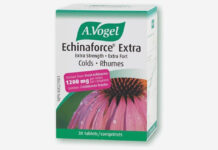
NOT ALL SUNSCREENS ARE CREATED EQUALLY. WHEN IT COMES TO CHOOSING THE BEST SUN CARE PRODUCT YOU NEED TO KNOW YOUR INGREDIENTS. HERE’S HOW TO DECODE THE LABEL AND PROTECT YOUR SKIN WITHOUT HARSH CHEMICALS.
BY NANCY RIPTON
PHOTO BY SARAH ORBANIC
By now, we all know that we should lather up before heading out into the sun. What you may not know, however, is that for optimal protection you need to guard your skin from both UVA and UVB rays – not all sunscreens do that.
UVB rays are the most superficial rays, which are responsible for giving us a sun tan (or burn) and also can contribute to aging and skin cancer. The Sun Protection Factor (SPF) on sunscreens measures only the amount of protection from these UVB rays.
“If you have a sunscreen with an SPF 30 you can stay out in the sun for 30 times longer than you could without that sunscreen and not get a sunburn,” says Dr. Paul Cohen, a Toronto-based dermatologist. The SPF value isn’t relevant in terms of UVA rays though.
“UVA rays penetrate deeper than UVB,” says Cohen. Although they do not physically tan or burn your skin, they are the primary rays responsible for premature aging and skin cancer.
“There are only four approved ingredients known to block UVA rays,” says Sean Gray, a senior analyst with the Environmental Working Group (EWG). These include: zinc oxide, titanium dioxide, avobenzone and mexoryl. However, the last two ingredients are not natural, are highly unstable, and break down quickly in sunlight.
The best option in terms of blocking harmful UVA rays is zinc oxide or titanium dioxide (ideally seven per cent or greater). These are natural, stable ingredients that will protect against UVA rays for at least two hours.
WHY NATURAL SUNSCREENS ARE YOUR BEST OPTION
If you are opting for an unnatural sunscreen, you’re opening yourself up to the possibility of potential toxic ingredients. “There is a long list of ingredients that are potentially harmful, or even cancer causing, that we just don’t know enough about,” says Dr. Rebecca Sutton, a staff scientist with the EWG.
This is especially troubling when it comes to children. The surface area of a child’s skin relative to their body weight is much greater than adults. Any chemical applied to their skin is about 1.4 times more significant than it would be when applied to an adult. Add that to the fact that children are less able to detoxify and excrete chemicals, they have a developing organ system that is more vulnerable to damage from chemical exposures, and children are more sensitive to low levels of hormonally active compounds and you have a potentially large problem.
Of all the chemical ingredients in unnatural sunscreens oxybenzone is the most troubling. Oxybenzone has been linked with a host of problems including allergies, hormone disruption and cell damage.
“Oxybenzone is a concern because it is readily absorbed by the skin and has hormone disruptive effects,” says Sutton. Oxybenzone is a penetration enhancer that helps other chemicals penetrate the skin and it displays additive hormonal effects when tested with other sunscreen chemicals. Ironically, oxybenzone is particularly harmful when mixed with sunlight. The sun’s rays mix with oxybenzone to form free radical chemicals that may be linked to cell damage.
“We know for sure that UVA rays can cause cancer,” says Sutton. We’re unsure of the long-term effects of mixing oxybenzone and other ingredients. The safest and most effective sun care option is a natural, oxybenzone-free product that contains zinc oxide or titanium dioxide.











